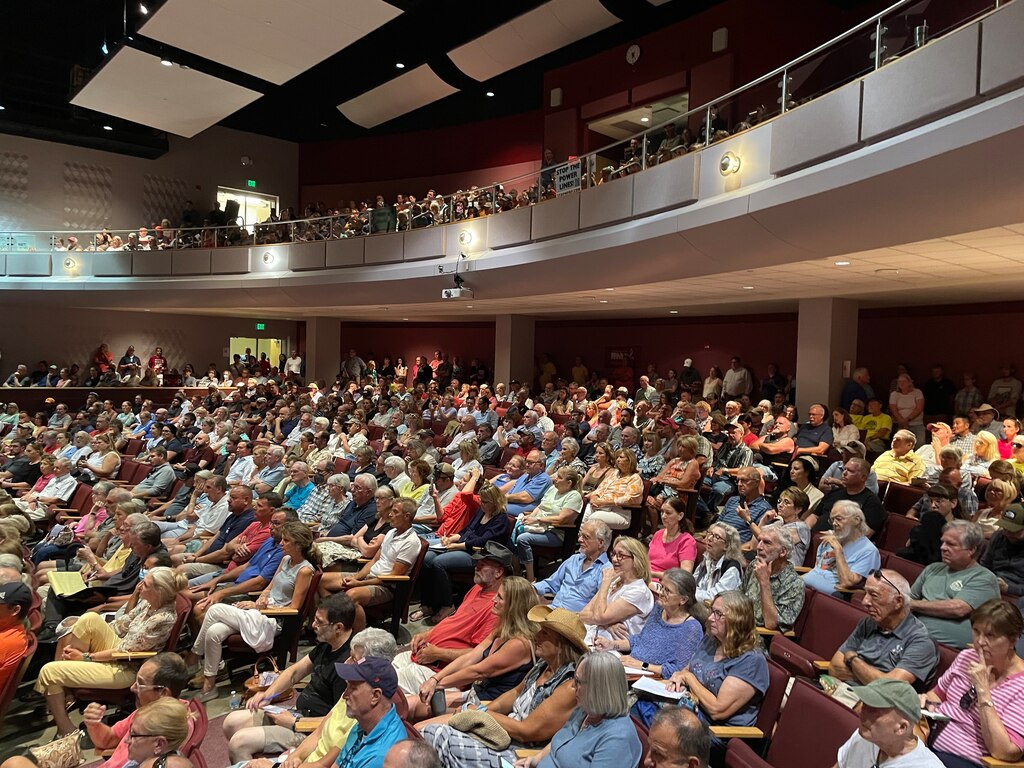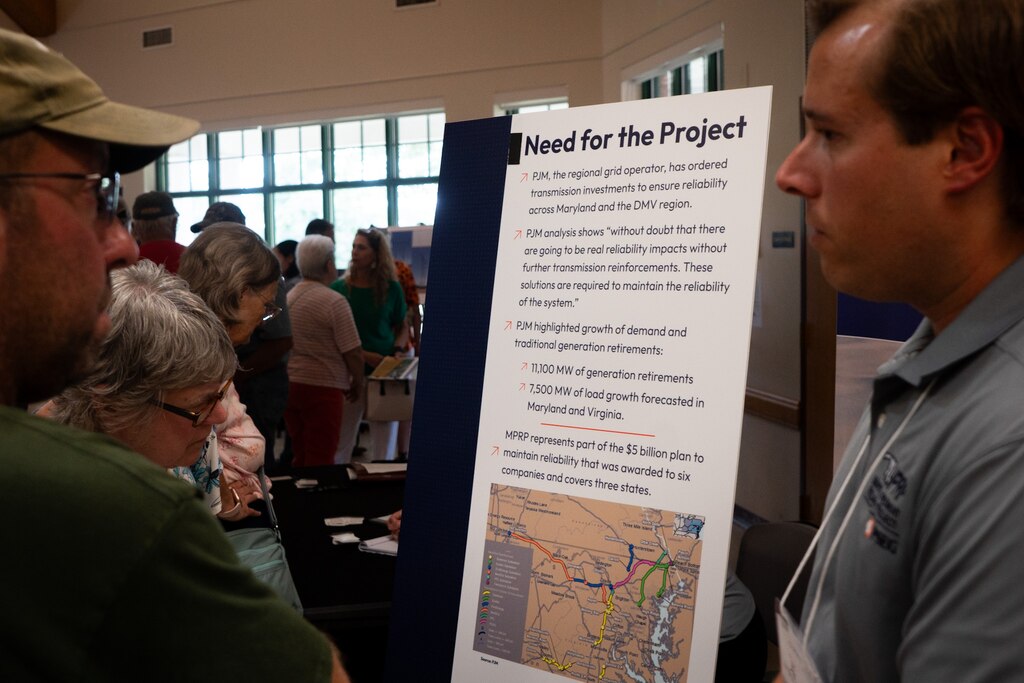Six state senators and 12 delegates representing Baltimore County have written Maryland’s power grid operator to demand more transparency about its plan for a 70-mile power transmission line that would slice through Baltimore, Carroll and Frederick counties.
The bipartisan group of legislators is also asking PJM Interconnection, which manages the power grid for Maryland and several other states, why it cannot use existing lines and infrastructure for the $424 million project, instead of building new lines that will cut through farmland, wineries, and homes.
“Our constituents deserve answers and transparency. Our constituents have significant concerns regarding the intended and unintended consequences of the proposed project,” the legislators wrote Manu Asthana, the president and CEO of PJM Interconnection.
The letter was signed by Democratic state Sens. Benjamin Brooks, Shelly Hettleman, Kathy Klausmeier, Charles Sydnor, and Republican state Sens. J.B. Jennings and Chris West. The state delegates who signed are: Democrats Eric Ebersole, Cathi Forbes, Michele Guyton, Cheryl Pasteur, Jennifer White Holland, N. Scott Phillips, Carl Jackson, Dana Stein and Aletheia McCaskill as well as Republicans Nino Mangione, Ryan Nawrocki, and Kathy Szeliga.
The Baltimore Banner thanks its sponsors. Become one.

Plans for the Maryland Piedmont Reliability Project have generated opposition at heated meetings in Frederick, Carroll and Baltimore counties since word of it began circulating in July. Many legislators learned of the project on Facebook or from constituents just a day or two before the company that PJM selected to build it — New Jersey-based Public Service Enterprise Group Inc. — held information sessions in all three counties.
Representatives of PSEG could not answer many of the questions that members of the public had about the need for the project or why it could not utilize existing lines.
PJM executives have not attended several public hearings that legislators have organized about the proposal, saying that their job was to choose a contractor and that contractor is responsible for questions about the planned transmission lines. But the company did say in response to questions that none of the proposals PJM received proposed using existing rights of way; all would have required some build-out.
“PJM has not stated that our role in this process is complete. What we have said is that we do not play a role in the routing and siting of a project; PJM’s role in this process is to determine future system needs and plan for them,” PJM spokesman Daniel Lockwood said in an email.
That dynamic has led to frustration at public meetings, where angry residents have pushed for answers that PSEG officials didn’t have. A meeting in Frederick became so heated that organizers threatened to call the county sheriff.
The Baltimore Banner thanks its sponsors. Become one.
“I want to say publicly that PJM’s refusal to engage the citizens of Maryland is wrong, and I find it to be an insult to all of us,” said state Del. Nino Mangione, who signed the letter and organized a heated meeting last month in Hereford to discuss the project. “Their behavior and lack of transparency is totally unacceptable.”
PJM has insisted that Maryland needs the project because the state imports 40% of its power from other states and has retired or plans to retire 14 coal-fired and natural gas power plants. State laws require that 50% of all power come from renewable sources by 2030, but the state has added a few new projects to the grid. Residents worry the lines would feed data centers in Northern Virginia.

Lockwood said data centers are the primary driver of increased demand in the short term, but added that “electrification is expected to become more of a factor over the long term. We have to plan for both.”
The 18 legislators are the most recent elected officials raising concerns about the project. Republican officials from all three affected counties have opposed it. The Board of Carroll County Commissioners put out a statement saying it “will leverage all its influence with our neighboring jurisdictions as well as state and national leaders to halt the project in its current form.”
Mangione started an organization, Save Our Community, to lobby against the project.
The Baltimore Banner thanks its sponsors. Become one.
Baltimore County Executive Johnny Olszewski Jr. and Frederick County Executive Jessica Fitzwater, both Democrats, also have raised concerns about protecting farmland and the possibility that land would be seized via eminent domain.
Local environmental groups and land trusts have also objected to the project, which would run through hundreds of farms that owners have placed in conservation easements to protect them from development. Two-dozen land trusts and conservation groups signed on to a letter calling the project “inherently detrimental” to the properties that land trusts are obligated to protect.
Once PSEG selects a final proposed route, it will submit an Application for a Certificate of Public Convenience and Necessity to the Maryland Public Service Commission. The Maryland PSC can approve, disapprove or modify any project. PJM usually offers testimony at that stage of the process, Lockwood said, and expects to do so in Maryland.




Comments
Welcome to The Banner's subscriber-only commenting community. Please review our community guidelines.